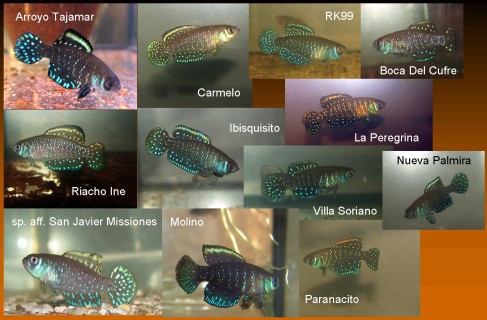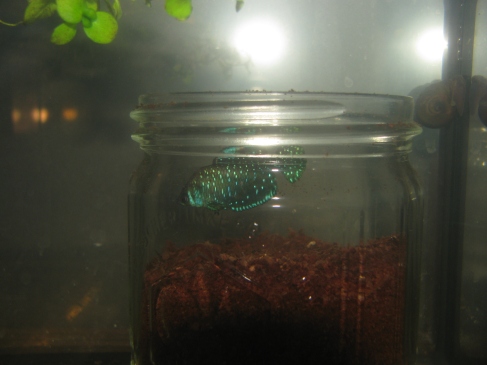When I first kept killies many years ago, this was one of the few annual killies available in our pet shops. Still it was pretty rare and I could buy them only once.
Today it is much easier to find this fish in the internet and because it is no problem to send its eggs by mail around the world, it is even possible to find different strains.
There are many. I still have no overview how many have already been collected but this fish seems to have a very wide distribution and every year new strains appear in the hobby.
The differences between the types are not drastic, there is a lot of overlap in pattern and colouration between the forms, but some appear more compact (RK99, Arroyo Tajamar) while others have a more elongated shape (La Peregrina, Carmelo).
The behaviour varies pretty much. Some strains are very shy and it is difficult to take good pictures. Others, like RK99, pose for minutes in front of the camera. Also there is a big difference in productivity. I could collect plenty of eggs from RK99, La Peregrina, Carmelo and San Javier Missiones, while Molino, Arrojo Tajamar and Ibisquisito seem to be more difficult.
How to keep and breed the fish?
They are easy to keep. Typically I have a pair, trio or even 2 couples or trios in a 12L tank without any filter or heating. I change the water very frequently (50% every 5-7 days) and try not to overfeed them. There are some floating plants in the tank and the usual jar with coco peat in which they lay their eggs. It is important to know that these fish do well in cooler water. In summer, between May and October they can be kept outside in our region. Temperatures as low as 10 degrees are no problem, but above 25 degrees they start to suffer. 18-22 seems to be ideal.
Every 3-4 weeks I exchange the peat with the eggs. Eggs will mature within 3-5 months at 21-25 degrees. Fry is large enough to eat artemia from the first day and they grow very fast. Within 6-8 weeks the males can be identified and after 3 month they start to spawn.
Conclusion
Although this fish has been in hobbyists tanks for decades, I would not disregard them as “too easy” or uninteresting. They are definitely among the most attractive killies and it is a very beautiful sight, if the males start to display in front of the females.
For me the challenge is to keep as many strains as possible, although I am limited in space. This requires some planning about the best strategy when to collect and when to wet their eggs. The relatively long incubation time is favourable in this respect. It can be extended or shortend by varying the storage temperatures. The eggs are usually stable over a long time. It is advisable to exchange the nigripinnis eggs with other hobbyists to have a “back-up” in case a strain is lost.
Christian K.



Hi Chris,
you are right. The small Austrolebias are realy a good beginner fish. My first
eggs I got from you my friend. 🙂
Best regards
Axel!
I really enjoy your blog.I’m a new breeder of these fish and I was lucky to catch them in their natural habitat , a big greeting from Argentina.